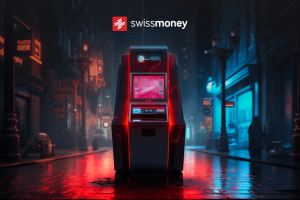Withdrawing funds from ATMs has become a routine aspect of managing personal finances. While the process may seem straightforward, what should you do before you withdraw money from the ATM?
This piece will explore the crucial actions to take before and when approaching the ATM.
Things you should know before withdrawing money from an ATM
An ATM (Automated Teller Machine) offers convenient access to cash and allows you to make deposits, check your balance, and transfer funds across checking accounts.
Even though you can access checking and savings accounts, note withdrawal limitations on savings.
Also, exercise caution when using credit cards for ATM withdrawals due to potential heavy fees and interest charges. Always insert your card into the ATM with the chip facing forward, enter your PIN, and follow the prompts for your transaction on the screen.
Furthermore, choose ATMs affiliated with your bank to avoid extra fees. Opt for well-lit, high-traffic ATM locations for safety.
Avoid leaving your card at the ATM. Ensure its retrieval after the transaction. If your card is lost or stolen, promptly call your bank for a replacement.
Accuracy in PIN entry is crucial, as three incorrect attempts may result in the ATM withholding your card. However, do not worry, the bank will issue you a new card.
Some ATMs cater to disabled users with audio feedback, spoken assistance, braille, and headphone inputs for those with visual impairments.
Steps to withdraw money at an ATM
While you follow specific steps like selecting account types or simply confirming your identity and amount, ATM withdrawals are typically hassle-free. To withdraw funds from an ATM, follow these streamlined steps:
Step 1: Card insertion and PIN entry
Insert your ATM, credit or debit card into the machine with the chip facing forward. If you mistakenly insert the card the wrong way, take it out, flip it, and attempt the insertion again.
The ATM might also have an icon or animation illustrating the correct card insertion.
Step 2: Enter your PIN for identity confirmation
Select your language and enter your PIN when the machine prompts you, and make sure to shield the keypad with your hand to prevent nearby onlookers from seeing it.
Step 3: Select the checking account and amount
Your withdrawal options vary. You can choose a Fast Cash option for a swift selection from the provided amounts or make a regular withdrawal to enter an exact amount.
When using your debit card at your bank’s ATM, specify the withdrawal account. It is handy if you have both checking and savings accounts.
For credit or debit cards linked to multiple accounts, choose the checking account and specify the withdrawal amount, with some ATMs allowing bill denomination selection.
Step 4: Review and confirmation
Verify the withdrawal details on the screen and confirm accuracy.
Step 5: Card retrieval and cash collection
Retrieve your credit or debit card, collect the cash, and take the transaction receipt.
Be mindful. Do not forget any of your belongings, particularly when in a hurry. Safely store it in your wallet or purse.
Depending on the ATM, you might get a printed receipt. Select Yes for a hard copy or No to review the transaction later on your bank’s website.
Remember, the withdrawal process may vary slightly between ATMs, but these fundamental steps generally apply. Also, when using an out-of-network ATM, be ready to agree to an ATM fee.
You can use a credit card to make a cash withdrawal. However, this operation is called a cash advance. In this case, be cautious of potential fees, such as a typical 5% cash advance fee and higher cash advance APRs than purchase APRs.
Personal identification number (PIN)
A payment card has a numerical code called a Personal Identification Number (PIN). You need to enter it to complete various financial transactions. The primary purpose of a PIN is to add an extra layer of security to the electronic transaction process.
ATM withdrawal limits
Exercise caution to avoid exceeding withdrawal limits. ATMs and banks typically have restrictions on the amount of cash per transaction or day.
The specific limit varies based on your bank and the ATM you use. The bank’s policy and other factors (e.g. the duration of your account’s activity) also influence the withdrawal amount. However, typically, withdrawal limits range from $300 to $1,000 per day.
Therefore, if planning a substantial withdrawal, check with your bank to determine the daily limit. Inquire about a possible increase if it does not meet your needs.
ATM fees
ATMs may involve fees, which you should know in advance as they can significantly impact your transaction. Here are the most common types of charges:
- Account fees. Financial institutions may impose a small fee. It is even more likely if you exceed the allowed daily transactions.
- Out-of-network fees. Using an ATM not owned by your financial institution may incur a $2 or $3 fee, potentially rising to $5 for international ATMs.
- Convenience fee. Privately owned ATMs might add an extra convenience fee, separate from out-of-network fees.
- Currency exchange fees. When a currency exchange is necessary, a fee of 2% to 3% of the transaction amount may apply, particularly common for overseas withdrawals.
While ATMs may impose various fees, you might not shoulder responsibility for all of them, and some banks provide opportunities for free ATM withdrawals in specific regions.
Adhere to ATMs owned by your financial institution to minimise fees. If your account has transaction limits, monitor your usage to avoid extra charges. Explore options, such as accounts with unlimited transactions, or consider switching banks if needed.
How do you check your balance at an ATM?
One of the features of ATMs is that they allow you to check your bank account balance. The bank and third-party ATMs offer this service but with potential fees for the latter.
You can do it by inserting your card, entering your PIN, and choosing the balance inquiry option. When you select one of your checking accounts, you can view the balance and print a receipt if needed.
Depositing cash at an ATM
Depositing money at an ATM varies between banks, but the process is generally straightforward. Here are the steps:
- Access your account: Insert or tap your debit/ATM card. Enter your PIN, choose deposit cash or deposit checks and then select your bank account.
- Deposit cash or check: Near the card reader, there is a slot where you can insert the cash or checks. Insert them, and let the machine count them.
- Confirm the total amount for the deposit: If the amount shown is wrong, edit it to reflect the correct amount. Once you see the correct amount, hit confirm to complete the deposit.
The funds from your deposit might not be instantly accessible, or initially, only a partial amount may be available. It could take a few days before the entire sum becomes fully accessible.
Also, remember that you can not deposit money at ATMs not linked to your bank. Additionally, most ATMs do not permit the simultaneous deposit of checks and cash. You must make two separate deposit transactions to deposit cash and checks.
How much money can you deposit at an ATM?
Banks usually do not limit the total amount you can deposit via ATM. Instead, you are more likely to encounter restrictions on the number of bills you can insert into the machine at once.
Moreover, if your cash deposit exceeds $10,000, you must report it to the Internal Revenue Service. While bank policies vary, checking with your financial institution for specific details is important.
📚Read more: How Much Cash Can You Deposit?
Where to find an ATM?
Finding an ATM within your bank’s network is simple and helps avoid extra fees.
Most banks and credit unions offer ATM locators on their websites or mobile apps, guiding you to the nearest machine. However, online mapping services, such as Google Maps, are probably the best method, showing you a straight way to the nearest ATMs.
Moreover, when travelling abroad, check your card for symbols like Plus, Maestro, or Cirrus, indicating compatibility with Visa or Mastercard networks.
Stay secure while using an ATM
Security while using ATMs should be one of your top priorities. First, ensure your safety when using an ATM by choosing well-lit and busy areas. Stand in a way or cover your hand when entering your PIN to keep your screen and key presses private.
Also, it is advisable to choose ATMs within bank branches for added security. Inspect the ATM for suspicious markings, hidden cameras, or misaligned card readers in case of possible fraud.
FAQ
Can I withdraw cash from an ATM in another country?
Yes. However, your bank typically charges a small fee for this service. Consult your bank for additional information. Sometimes, the bank that owns the ATM may also apply a charge.
Can you use a credit card at an ATM?
You can withdraw cash using a credit card, though it can be expensive.
However, there might be instances where you cannot withdraw cash from an ATM using your credit card because you have reached the credit limit for a cash advance on your card.
How do I use a debit card in an ATM for the first time?
Usually, there is nothing special about using a debit card in an ATM for the first time. You only need to use an ATM according to the basic steps.
However, if you use your new debit card for the first time, you need to activate it. You can do it at an ATM. Take the debit card and its pre-assigned four-digit PIN. Insert the card into the ATM, enter the provided PIN, and follow the on-screen prompts to finalise the activation process.


